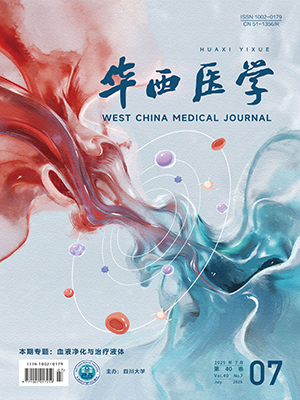| 1. |
韩炳善, 袁媛. 西安市 2074 名学龄前儿童扁平足发生情况. 中国学校卫生, 2019, 40(7): 1097-1098.
|
| 2. |
张英杰, 吴桐, 黄家峥, 等. 昆明市学龄期儿童扁平足筛查及影响因素分析. 中国学校卫生, 2023, 44(5): 765-768.
|
| 3. |
翟俊娜, 邵丽娜. 扁平足诊疗评估方法总结及某高校女生扁平足发病率调查. 按摩与康复医学, 2022, 13(14): 56-58.
|
| 4. |
Turner C, Gardiner MD, Midgley A, et al. A guide to the management of paediatric pes planus. Aust J Gen Pract, 2020, 49(5): 245-249.
|
| 5. |
Pfeiffer M, Kotz R, Ledl T, et al. Prevalence of flat foot in preschool-aged children. Pediatrics, 2006, 118(2): 634-639.
|
| 6. |
Kosashvili Y, Fridman T, Backstein D, et al. The correlation between pes planus and anterior knee or intermittent low back pain. Foot Ankle Int, 2008, 29(9): 910-913.
|
| 7. |
Neal BS, Griffiths IB, Dowling GJ, et al. Foot posture as a risk factor for lower limb overuse injury: a systematic review and meta-analysis. J Foot Ankle Res, 2014, 7(1): 55.
|
| 8. |
Siu WS, Shih YF, Lin HC. Effects of Kinesio tape on supporting medial foot arch in runners with functional flatfoot: a preliminary study. Res Sports Med, 2020, 28(2): 168-180.
|
| 9. |
Carr JB 2nd, Yang S, Lather LA. Pediatric pes planus: a state-of-the-art review. Pediatrics, 2016, 137(3): e20151230.
|
| 10. |
熊怒, 王旭, 黄加张, 等. 儿童柔韧性扁平足的矫形鞋垫治疗研究进展. 中国矫形外科杂志, 2022, 30(7): 630-634.
|
| 11. |
Kodithuwakku Arachchige SNK, Chander H, Knight A. Flatfeet: biomechanical implications, assessment and management. Foot (Edinb), 2019, 38: 81-85.
|
| 12. |
Alam F, Raza S, Moiz JA, et al. Effects of selective strengthening of tibialis posterior and stretching of iliopsoas on navicular drop, dynamic balance, and lower limb muscle activity in pronated feet: a randomized clinical trial. Phys Sportsmed, 2019, 47(3): 301-311.
|
| 13. |
Jeong DW. The effects of the visual feedback short foot exercise on foot alignment in adults with flexible flatfoot. Int J Psychosoc Rehabil, 2019, 23(1): 220-226.
|
| 14. |
Elataar FF, Abdelmajeed SF, Abdellatif NMN, et al. Core muscles’ endurance in flexible flatfeet: a cross-sectional study. J Musculoskelet Neuronal Interact, 2020, 20(3): 404-410.
|
| 15. |
Menz HB, Dufour AB, Riskowski JL, et al. Foot posture, foot function and low back pain: the framingham foot study. Rheumatology (Oxford), 2013, 52(12): 2275-2282.
|
| 16. |
Kim HW, Park KB, Kwak YH, et al. Radiographic assessment of foot alignment in juvenile hallux valgus and its relationship to flatfoot. Foot Ankle Int, 2019, 40(9): 1079-1086.
|
| 17. |
Tsai CC, Chih YC, Shih CL, et al. Joint hypermobility and preschool-age flexible flatfoot. Medicine (Baltimore), 2022, 101(31): e29608.
|
| 18. |
Fuentes-Venado CE, Ángeles-Ayala A, Salcedo-Trejo MS, et al. Comparative assessment of flatfoot in preschool children. Bol Med Hosp Infant Mex, 2020, 77(6): 312-319.
|




